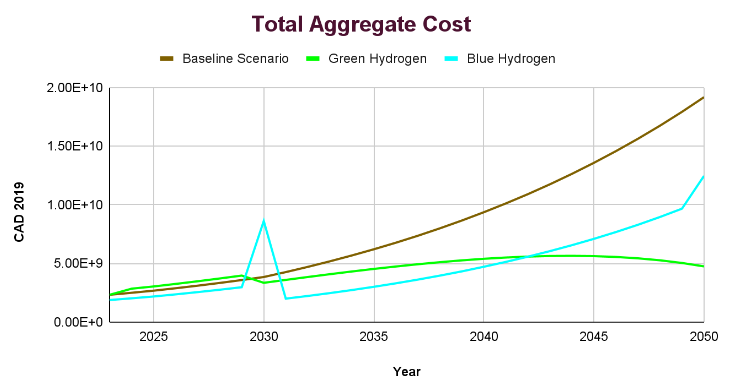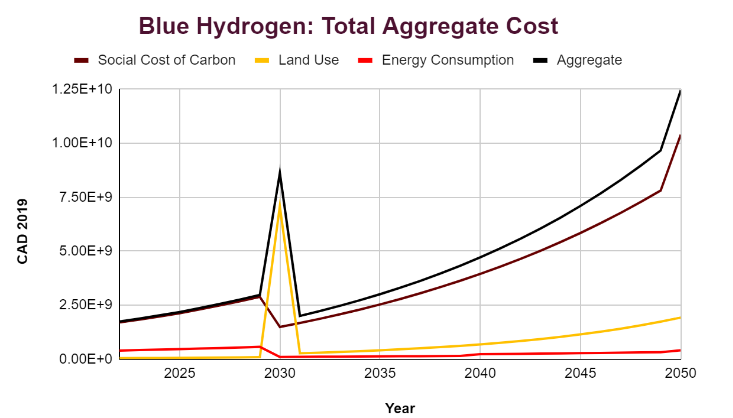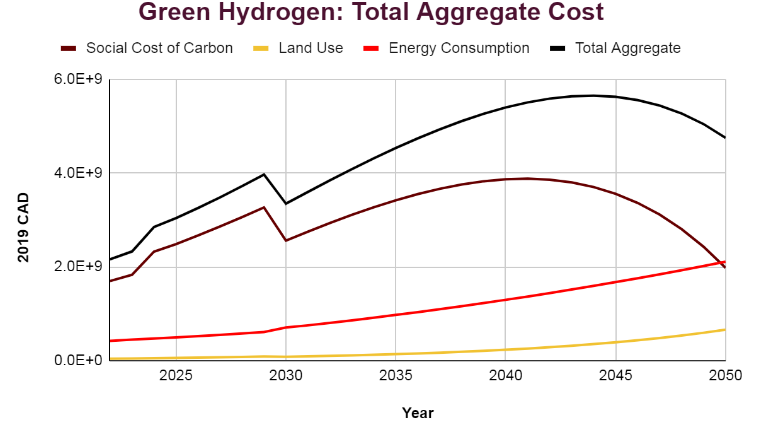

A comparative analysis of blue hydrogen vs green hydrogen for steel decarbonization.
Cost Scenarios of Hydrogen Integration within Canadian Steel Making Processes
Duration
Role
Type
Method & Tools
4 Months
Researcher
Scenario Based Study
Cost-Benefit Analysis, Comparative Scenario Modeling, Emissions Projections, Energy & Land Use Assessments
Link to File
Click Here
Project Collaborators: M.A. Sarina de Havelyn, M.A. Dean Keranovic, M.A. Paul Benfield, M.A. Hasrat Kathuria, M.A. Amir Ashraf Vaghefi
Overview
This project analyzes three hydrogen deployment scenarios for Canada's steel sector: maintaining the status quo, full deployment of green hydrogen by 2050, and full deployment of blue hydrogen by 2050. Using a cost-benefit analysis of direct energy costs, land use, and the social cost of carbon, we recommend targeted financial instruments to foster green hydrogen adoption and discuss the associated policy implications.
Timeline
The study uses a cost-benefit analysis (CBA) approach to evaluate hydrogen deployment within the steel industry. Energy procurement, emissions, and land use are quantified for the green, blue, and baseline scenarios. The analysis draws on plant-specific data and industry benchmarks to estimate costs through 2050. The study focuses on steel plants in Ontario and Quebec, reflecting regional energy dynamics and policies.
Methodology




Figure 4. Green Hydrogen Implementation Costs.
Figure 5. Blue Hydrogen Implementation Costs.
Research Implications
The findings indicate that green hydrogen, while costlier in the short term, offers significant long-term benefits in emissions reductions and sustainability. Blue hydrogen, though less expensive initially, presents concerns related to methane leakages and long-term fossil fuel dependency. The study advocates for targeted financial support to accelerate green hydrogen adoption within Canada's steel industry, aligning with the nation's net-zero goals.
Modelling Results




